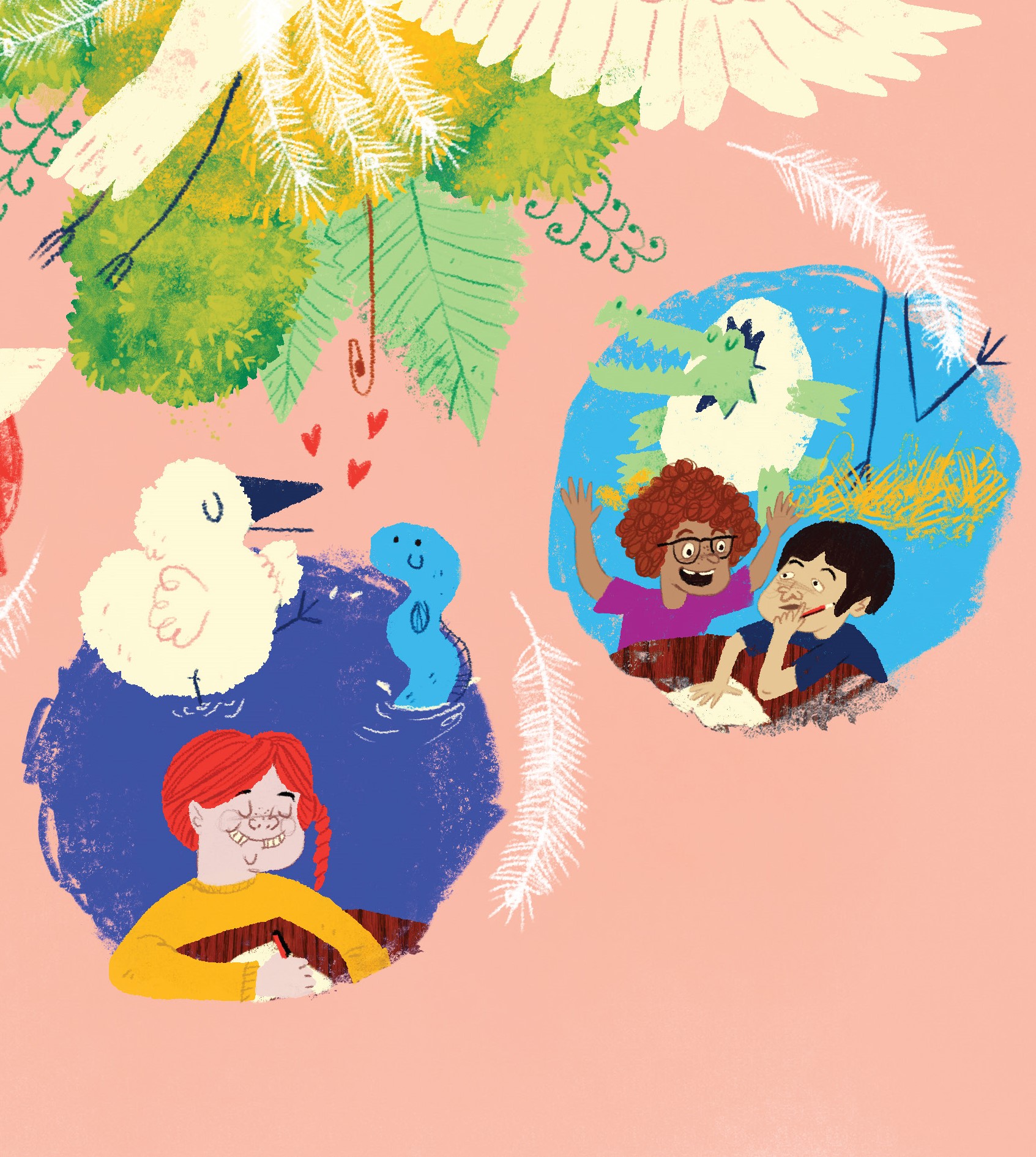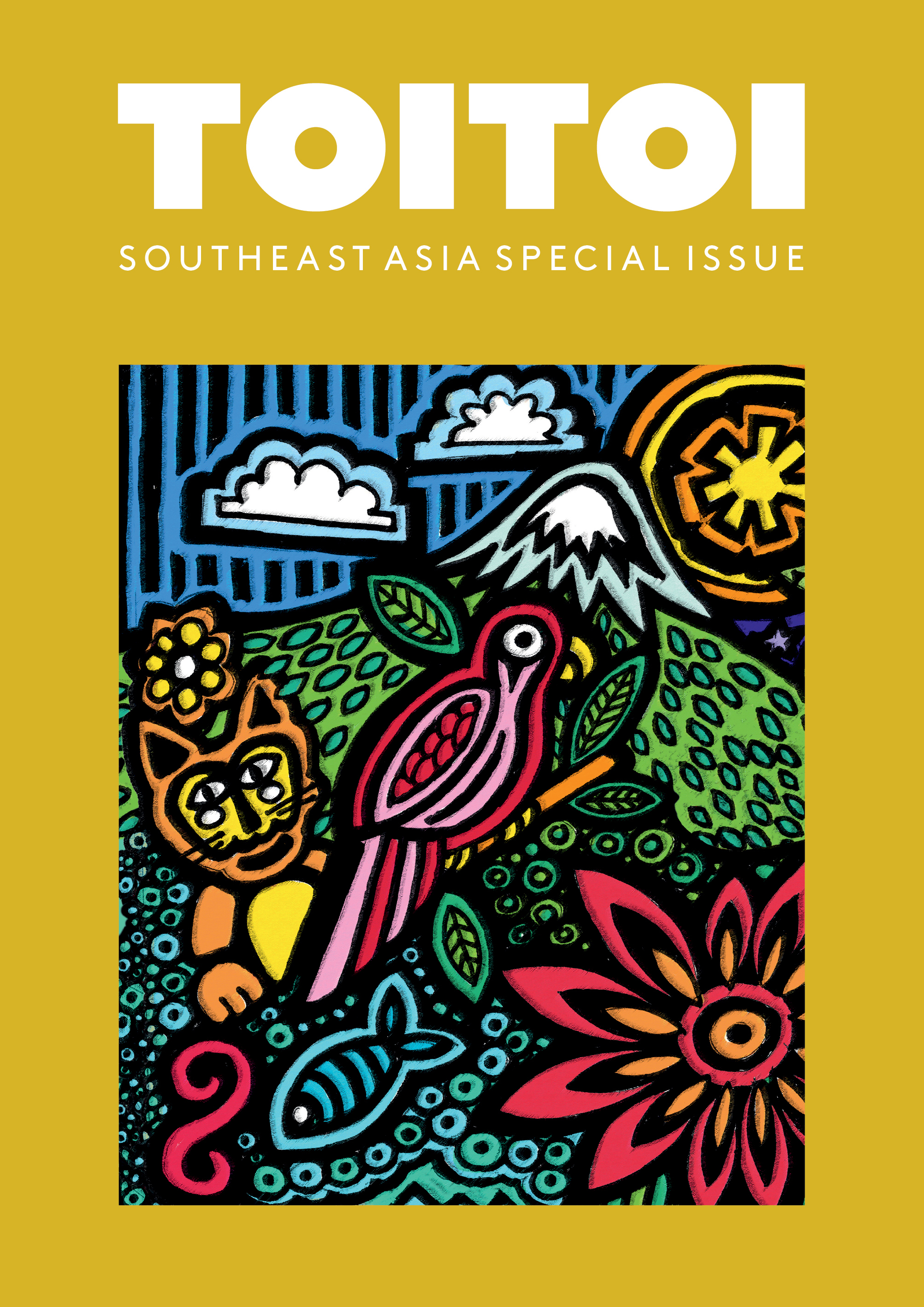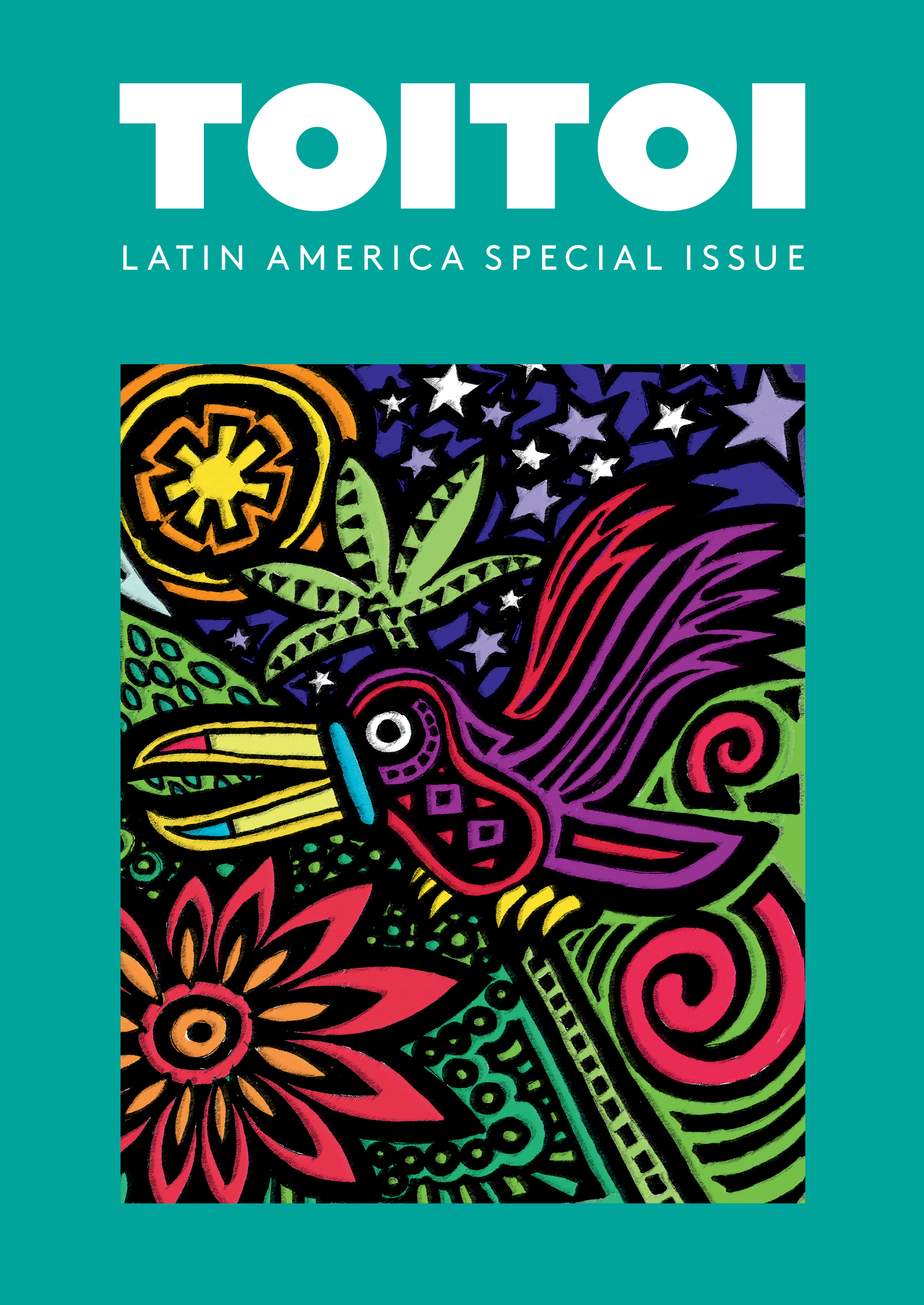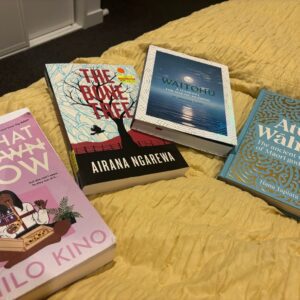“One year, Mr Puru found mushrooms growing in his classroom carpet,” says Trish Hereaka, a Year 2 and 3 teacher at Rātā Street School in Lower Hutt. “When they dug up the floor, they found a pipe had burst.”
Hereaka is always keeping an eye out for ways to tie together learning, exploration and writing. “I asked my class: what had made the pipe burst? Had a taniwha got into the pipes? We made up our own legend and created a book, which I share with my current class.”
The idea of creating legends came partly out of a class visit by local writer Moira Wairama. Hereaka was also inspired by her recent trip to Alaska, were she heard a local legend about a raven stealing the sun. These stories, combined with the fact the school had New Zealand birds as their current inquiry focus, meant looking at bird-related myths and legends seemed logical. And writing their own came next.
“The students and I created a template of the common features of a legend,” says Hereaka. “Next, we retold and rewrote some known legends using our own words and explored using a ‘hook’ to engage our audience.”
After this solid introduction, Hereaka took her class for a wander around the school to find some local inspiration. “We settled on a fantail, a white heron and the Waiwhetu stream. We also learnt that Naenae used to be a swamp, so our school land was previously a swamp. From this, we created ‘How the fantail got a fan tail’.”
Each student wrote their own legend using these elements, with plenty of feedback from classmates and Hereaka along the way, while she kept a close eye on the Level 1 and 2 curriculum objectives and strategies.
Each student wrote their own legend using these elements, with plenty of feedback from classmates and Hereaka along the way, while she kept a close eye on the Level 1 and 2 curriculum objectives and strategies. The students had the freedom to create parts of their story using pictures, acting or music to help them explore the process of creating.
Hereaka sees lots of benefits of having a strong creative writing presence in her classroom. “Students see themselves as writers and authors because they are conveying their own personal voice to their readers. They may entertain or inform, or convey feelings, using their own words, ideas and experiences,” she says.
Visits from published writers through ReadNZ’s (formerly NZ Book Council) Writers in Schools programme can be both inspiring and reassuring. “When the writer shares their own life experiences or the process that they go through to create a book, the students begin to make links between their writing journey and the [visiting writer’s] journey,” explains Hereaka. “Often the writer talks about making mistakes, changing parts, proofreading, editing – all the steps we use in the classroom.”

In 2012, the National Monitoring Study of Student Achievement New Zealand (NMSSA) found there was a marked decline in children’s attitudes and performance in writing as they moved into upper primary. While two-thirds of Year 2 and 3 students around the country were doing well, by Year 8, two-thirds of students were achieving below expectations, boys especially. This was despite strong participation in professional learning and development by teachers. What could be done?
A follow-up report by the Education Review Office in May 2019 examined schools that were doing particularly well in writing in Year 7 and 8 to see if any common conclusions could be drawn. It found that the best results came when writing was incorporated into all parts of classroom learning – enacting things learned in a wide range of topics – as well as giving students the opportunity to practise various writing techniques. It was also important that teachers understood the purpose of writing, relating to both the curriculum and the future lives of their students. Very strongly, it found that success came when teachers placed an emphasis on craft to help children organise their ideas.
Evans Bay Intermediate is addressing these points in a unique way. In 2018, the Wellington school decided to give students more agency in the subjects they could learn, so now the whole school takes two electives every Friday morning, for 45 minutes each. There are over 20 options – including chess, French, science and the William Pike Challenge – and students sign up term by term. This way, they can either try out lots of different activities or focus on mastering a couple. One of these electives is the Toitoi Journal Club, run by teacher Raymond Chave.
“I work with students on their writing – it’s not so much a lesson, more one-on-one support,” says Chave. “I’ll help [them] scaffold their ideas, plan their ideas, with the aim to publish in Toitoi.” Toitoi is a New Zealand journal of original writing and artwork by children aged five to 13, published once a term.
The elective grew somewhat organically out of a lunchtime club a couple of years ago, which in turn was borne of Chave’s observation that the same group of students were signing up for every reading and writing activity run by the school. “I got given a library leader group [to organise], and it just so happened that the same students were trying out for the Kids’ Lit Quiz, and also wanted to do the HELL Pizza reading promotion.” Chave noticed these same students were interested in entering writing competitions.
Chave was keen to support the students he saw throughout the school who weren’t extroverted or sporty. “I just like to see success in students, and I like to look at what I can do for, say, that quiet student who’s got a creative element but no outlet.”
“I just like to see success in students, and I like to look at what I can do for, say, that quiet student who’s got a creative element but no outlet.”
Raymond Chave
From these origins, the club has seen some unexpected outcomes. “I walk around at lunchtimes and they’re all hanging out together in the library, sharing their writing,” says Chave. “It’s made their own wee community, their own friendship group.”
It’s also meant he’s getting to know more students from across the school. “Only about four or five of them are from my homeroom class, and 25 are from other classes.”
Chave says the original lunchtime club was a group of about 15 girls, but when the club became a school-wide elective, another unexpected outcome occurred. “All of a sudden, I got quite a different learner. Now it’s about two-thirds girls, one-third boys,” Chave observes. “To get boys writing has been a bit tricky in the last few years, and it’s been quite noticeable that boys are signing up for this group now.”
“To get boys writing has been a bit tricky in the last few years, and it’s been quite noticeable that boys are signing up for this group now.”
Raymond Chave
Chave says he’s noticed most boys at his school want to spend their lunchtimes running around outside. “Now that [the writing group] is in class learning time, it’s more attractive. The boys come into the lesson on a Friday morning, and they’re a little bit muddy,” he says. “A lot of them say they enjoy writing with no parameters.”
It’s not all fun and games, though. Chave emphasises to the students in his group that writing deserves to be taken seriously, and it’s hard work – especially because the goal of the group is to be published in Toitoi. “It’s a privilege to be published in such a beautiful journal,” he says. “It’s like a real job – [Toitoi supplies] a contract, it’s a professional published book.”

He works with the students on things like target audience (“the readers are five to 13, so don’t make it too gruesome”), word count and being mindful of the time of the year the next issue will be published – “a Halloween-themed story or poem won’t work in Term 1”.
Students use technology to share their work with each other. They post their work on Seesaw and are required to make a comment on someone else’s work each week before starting on their own writing. “It has to be a ‘compliment sandwich’,” Chave says. “They also share their Google doc with me, and I [comment with] ideas, or highlight some parts they could expand with more precise language or other language features.”
Chave has started using published writing from the Toitoi group in his classroom. “It’s good to look at poems from the School Journal or New Zealand authors sometimes – but it’s also nice to look at an [Evans Bay] student poem that was published in Toitoi. I put it up on the screen, and we pull it apart for its precise language and everything,” he says. “It gives my students an exemplar – especially when they recognise the name.”
Luca, one of the students in the Toitoi Journal Club, has got a lot from taking the elective. “I enjoy it because it’s got a great atmosphere, where we all bounce ideas and constructive criticism off each other,” says Luca. “I’ve learned a lot about writing, deadlines and time management.”
“I’ve learned a lot about writing, deadlines and time management.”
Luca, a student at Evans Bay Intermediate School
The writing club also gives its members lessons in resilience and success. Students who have work accepted for publication are celebrated in a school assembly, where they receive a Toitoi merit patch to sew onto their uniforms, “like if they were in the basketball or debate teams,” says Chave.
Chave acknowledges it is “quite tricky” to manage the students’ disappointment when their work isn’t accepted – but he uses it to impart a life lesson: “Perseverance and resilience are key if you want to be successful with whatever you do in life.”
He shares the story of one of his past students who submitted to Toitoi unsuccessfully seven times, before being accepted on her eighth try. “If they do get that rejection, we make sure we’ve got plan B, C, D, E. We’re going to go again!”
Exploring cultures through creativity
Toitoi is a journal that publishes the creative writing and artwork of New Zealanders aged five to 13. It has received awards for its excellent design and won Best Primary Resource in 2016. And it has just published two very special editions celebrating New Zealand’s connections to the cultures and languages of Latin America and Southeast Asia.
In Term 1, 2020, every primary and intermediate school in New Zealand will receive free copies of these special journals thanks to a collaboration with the Latin America Centre for Asia-Pacific Excellence (LATAMCAPE) and the Southeast Asia Centre for Asia-Pacific Excellence (SEACAPE). Each poem or story in the journals is published in two languages – English and a language of the Asia-Pacific – due to the involvement of expert translators from the School of Languages and Cultures at Victoria University of Wellington.
Founding editor of Toitoi, Charlotte Gibbs, says the idea originated during a conversation with Associate Professor Sally Hill, Head of the School of Languages and Cultures.
“Our young people are bursting with curiosity about the world and their place in it,” says Gibbs. “It is so important that they see the arts as a way to explore their imaginations, examine their experience and express who they are.”
“It is so important that [our young people] see the arts as a way to explore their imaginations, examine their experience and express who they are.”
Charlotte Gibbs
Gibbs says Toitoi has always wanted to encourage curiosity and creativity, so young creators’ connections to these cultures could be “real or imagined, big or small, past, present or future.” To help inspire these connections, Toitoi made sure to offer practical support to teachers.
In April 2019, Toitoi and the National Library’s Services to Schools hosted workshops throughout the country to help educators find ways to engage their students in learning and creativity. The National Library curated resources about the two regions on their online Topic Explorer, and teacher support materials provided ideas for the classroom – all with the aim of learning about other cultures (or sharing students’ own cultures with their peers) via creating stories, poems and artwork for potential publication in Toitoi.
Toitoi received 407 submissions from 52 schools throughout the country, and 114 young writers and artists will have their creative work published in the journals.
Gibbs hopes to publish further special language editions in future, alongside the four regular issues each year.
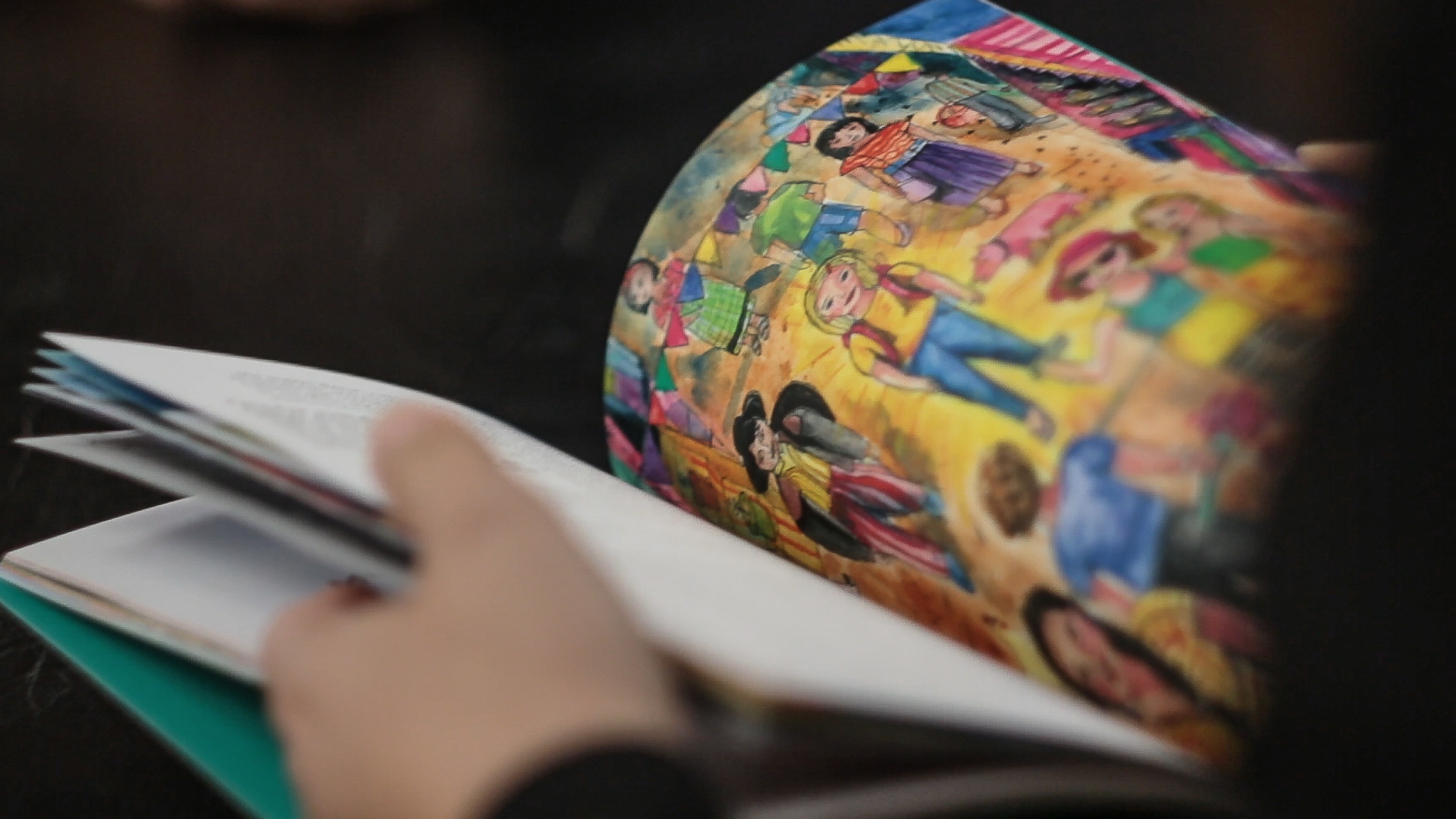
Visit toitoi.nz for information about how your students can submit writing and art, or to purchase a subscription, including teacher support materials, for your school library.
